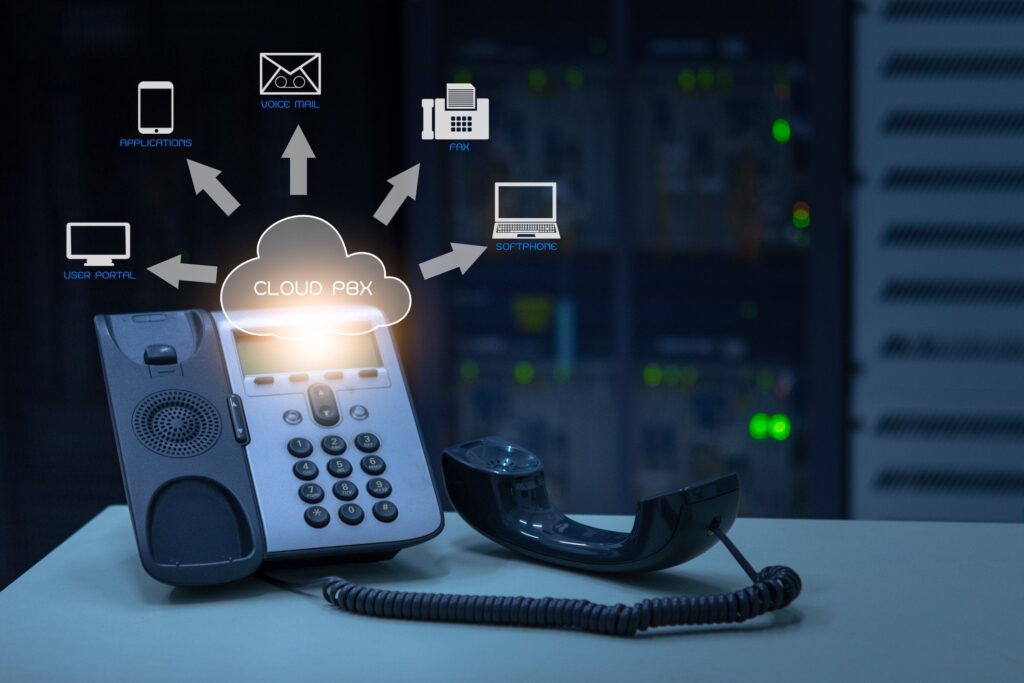PBX Phone System
PBX is a common acronym for those looking for communication solutions for their businesses. Typically, PBX is one of the most efficient phone solutions that companies can employ.
PBX – in full, the Private Branch Exchange System is commonly used for internal communication within an organization or a business. Still, this phone system can also be used in external communication, but it will require communication channels like Voice over IP, ISDN, or analog. With a PBX, you can have multiple phones that a physical phone line (PTSN) would have.
A Private Branch Exchange System is a business-grade phone system with many business telephony features to make communication easy. These features include call transfer, music on hold, call queue, call conferencing, call forwarding, interactive voice menus, auto-attendant, and voicemail. These are critical voice features essential for the company to run its daily operations, and cellphone services and residential telephone lines do not offer such features.
While using a PBX phone system, the physical phone systems that enter your business are split into many lines, allowing you to support more telephones. The most impressive feature of a Private Branch Exchange System is that calls between users are free.
How Does a PBX System Work?
A PBX phone system has three variations – analog, digital/ VoIP, or cloud-based system.
Analog PBX Phone System
Also called a landline system, Analog PBX uses a public switch telephone network(PSTN). This system is a traditional telephone system that was previously popular in many offices. Their connections are through Plain Old Telephone Service (POTS) lines to the PSTN. The system handles phone calls and fax transmission using physical lines. Also, they can handle incoming and outgoing calls using outside lines.
The limitation of these systems is that they cannot use most of the present-day features found in advanced telephone systems, e.g., converting voicemail to email, multimedia services, or remote working capabilities.
Analog PBX uses traditional copper phone lines. If your business expands, you’ll need additional telephone wires and new jacks to support the extra employees. Their biggest benefit is that they are independent of the internet; so, connectivity is not impacted if the internet were to go down.
Digital/VoIP PBX System
The digital PBX system is similar to the traditional system but has additional features, making it cost-effective and more powerful. Unlike the traditional PBX system, it does not have conventional phone lines but uses the Internet protocol and bandwidth. This gives it the ability to handle the intelligent functions that a modern business requires. Typically, the system converts voice into data and transmits it over the internet. The same data is converted to voice again for the receiver.
The VoIP grows with your business. Similarly, growth and maintenance are easy. Users access unified communication features such as video conferencing, which isn’t available on traditional PBX.
Cloud PBX
Cloud-based PBX is quite similar to the digital system, with the significant difference being the location of the equipment and its maintenance. Ideally, a hosted PBX means that the phone system is stored in the cloud rather than your telecom closet. Simply put, a hosted PBX is a VoIP-based PBX that is in the cloud, and a service provider maintains it. Businesses connect to it over the public internet. The most significant advantage of cloud-based systems to the customers is eliminating the system’s maintenance cost. Besides, it eliminates the hassles of upgrading the PBX software as well as service downtime. The service provider offers all these services.
To use this system, plug your desk phone into a router. The server at the provider’s location will handle all the calls, signals, and features.

